In high school, I took college-prep courses. Probably not a big surprise, coming from a writer. But I also took all the shop classes. Woodshop, metal shop, electronics, and auto shop. And metal shop was my favorite. Welding, casting, milling, and turning stuff on a lathe appealed to me. Working with metal was awesome, knowing I turned a lump or bar of nothing into something. When affordable 3D printers first appeared, I appreciated the rapid prototyping ability. Print it, evaluate it, and then make it out of something more substantial, possibly metal. But let’s face it, today’s 3D printer can churn out useful things that don’t need to be remade in other materials. To demonstrate this, a friend of mine provided a box of stuff that he prints at home and offers for sale on eBay, under username tier1_3d_prints.
With some time and imagination, you really can print just about anything these days. I’ve seen plenty of printed firearms receivers, but I’m going to stick to accessories for this article. And to narrow it down a bit further, I’ll focus on products that firearms enthusiasts like myself would use. If I’m sharing it here, it’s because I see some value in them. Note too that there are accessories, not necessities. I can manage without these items, but they are certainly useful.
Ruger 22 Charger Picatinny and buffer tube adapters
One of the most popular rimfires today is Ruger’s 22 Charger. Based on their 10/22 rifle action, this “pistol” has been the go-to for suppressor fun. Of course, this little plinker works best with a brace. And that requires either a vertical rail, or a buffer tube (actually, a receiver extension). Some models do come with a factory Picatinny rail on the rear already. But ask any enthusiast if they have seen one, and few have. I had to wait a few months for Ruger to ship me one. Which means most enthusiasts are going to have to source an aftermarket adapter. On the bright side, all of them install with a single screw.
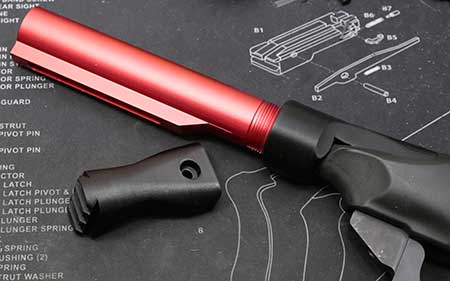
Either flavor is available in aluminum or Delrin, and runs around $45 to $60. For just $15.99, you can have a 3D printed one quickly shipped to your door. I was able to thread a tube into the buffer tube style with ease, but it does require extra care. Once in, it’s very solid, but it’s also easy to cross thread, if you’re not careful. The Picatinny adapter held my SB Tactical brace just fine. No concerns about strength with either. If you can break one, you’re too rough on your gear. Also, I would prefer the $16 part break before the clamp on my $150 brace does. These are both a big win, as far as I am concerned. You can get the pair for less than one in aluminum.
Rimfire pistol charging rings
Rimfire semi-auto pistols are fun. Racking the narrow slide, not so much. Some are hard to grab, and others are prone to pinching. Chambering a round or clearing a jam are much easier with some sort of “loop” on the rear of the bolt or slide. Available for the Ruger Mark series, as well as the S&W SW22 Victory, these are simple to install. They slide over the rear of the firearm, and then it’s a matter of tightening a single cross bolt.
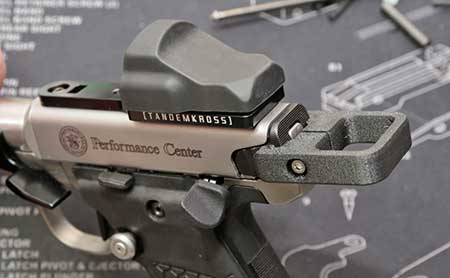
On my personal pistols, I have three different aluminum charging rings. I would not want to shoot without them. If I didn’t have them, I’d install one of these 3D printed ones. Well, I did test install these, and then put my other ones back on. These do the job, and for $13.99, they’re hard to beat. The aluminum versions are a bit thinner though. And their sleeker look really appeals to me. But again, 3D printed is about 1/3 the price, leaving enough cash left over for a box of bulk ammo. Is 3D printing the Ramen noodles of firearms accessories?
10/22 pattern magazine chamber flag
Here’s a clever safety item that has some pros and cons, but I think the pros outweigh most negatives. Your own personal use case will determine that. It’s printed in bright orange, recognized as a safety color. Pop this into your 10/22 or similar rifle, and it holds the bolt partially open, and sticks out below the magwell (on most rifles). From a distance, it’s easy to tell that the action is open. A cut in the bottom makes it easy to remove without any swearing.
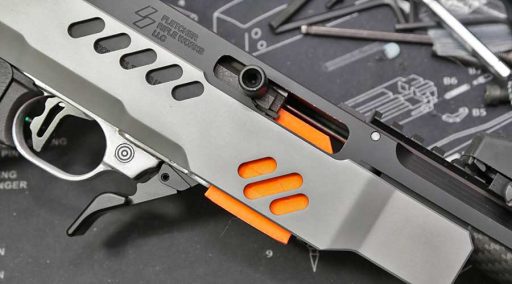
Compared to the chamber flag that actually pokes in the chamber, this is better or worse. Those chamber flags have a habit of falling out, and aren’t so handy for bolt actions. On a semi-auto, there is some spring tension to keep them in place. This won’t fall out, which is a plus. But there is nothing sticking out of the ejection port either. So I prefer these when shooting with friends on public land, as opposed to the indoor range. Because they are not quite as obvious to some people. The real downside, as compared to the traditional flag, is that it’s possible to install this with a round in the chamber already. It won’t fire, but it’s not idiot-proof either.
Ruger 10/22 magazine storage container
This is a nice little box that’s designed to hold three or five 10/22 magazines. My sample holds five, which I think is ideal, as that’s one box of 50 rounds. The sliding lid fits securely, keeping your magazines in, and debris out. For unexplainable reasons, I really like the surface treatment. On the sides, it’s horizontal lines, as expected from the printer. But the bottom has a texture that looks like sandpaper, yet is sort of smooth. Then the lid has a bit of a of cross-hatch that reminds me of knurling. If there is a downside to the design, it’s that the magazines can’t be easily plucked out. I slide the lid a bit, and dump each magazine into my hand, one at a time. Prices are $15.99 for the smaller one, and $18.99 for the larger. That includes postage.
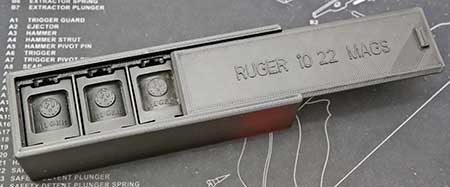
Pre-Covid, a typical weekend for me included letting friends and relatives do 10/22 mag dumps with a 110 round drum. With current ammo prices, that happens a lot less often. Like, never. I’ve been focusing more on my precision shooting. I’ve got a very accurate 10/22, as well as a Precision Rimfire, and Ruger’s excellent LRT rifle. All of them take the same 10/22 magazines. Match grade ammo is currently a little under 30 cents per round, locally, and is therefore treated with a little extra care. So I load up my expensive ammo into my cheap magazines, and store them in this fancy box for the trip to the range. If you’ve got a little OCD, you’ll understand.
PMag holders
Just when you thought this was going to be all about rimfire accessories, I have to share the centerfire stuff. So you’ve got some magazines for America’s favorite modern sporting rifle? Well, that’s covered. It’s $7.99 for the three magazine .223/5.56 holder, and $8.99 for the version that holds six in the same caliber or three in the slightly bigger .308/7.62 caliber. Think about that – only $8.99 to hold six standard-capacity 30-round magazines. That’s 180 freedom pills, all nicely organized.

Glock dummy magazines
At first, I wasn’t sure why I would want a bright orange Glock-compatible dummy magazine. They don’t lock the slide open, don’t flag the chamber, and they do allow a round to exist in the chamber. So not exactly range-friendly, for that last reason. Then it struck me. For anyone who has multiple pistols, some of which may be ready to be pressed into action, these could be invaluable. If I had to grab a handgun out of my safe in a hurry, I would prefer one that’s, you know, loaded! And a bright orange magazine poking out of the bottom really says “Don’t pick me”.
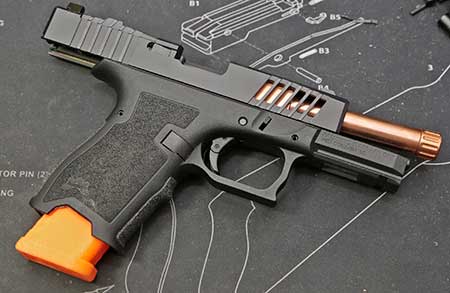
We’re back to accessories, not necessities. If I told my wife to grab a gun from the safe, it’s obvious to her as well which ones don’t have any boolits. Granted, if that were a real concern, I suppose things would be better organized. There should never be any room for doubt when diving into a safe for a weapon. This just takes that an extra step further.
.22, 9mm, and .38/.357 dummy rounds
For dry firing, and function testing, dummy rounds are invaluable. They’re also a good tool for teaching new shooters. Mix one in a magazine or cylinder, and you can observe if someone flinches when pulling the trigger on the dummy round. They also work for failure drills in semi-autos when mixed in with live ammo. If it doesn’t go bang, see how quickly you can clear it and chamber another round. Durability varies, but the most expensive option is 50 9mm for $18.99, which is cheaper than live ammo. And they will last through plenty of priceless practice. They’re not perfectly smooth, so topping off a magazine with them isn’t super easy, but they fed and ejected perfectly in multiple tests. I use these a lot now for dry-fire practice.

But wait, that’s not all!
Conor likes to tinker, so he’s got some other 3D printed stuff available. While they may seem odd, they are all clearly useful. And that’s the cool part. He looks at something, thinks “I can make that better”, and prints it out. I regularly check his eBay items, just to see what he’s got going on. Fun stuff. I do want to thank him for sending me these bits and pieces to try out. You might see more of them in my various projects, as I have found all of them to have varying degrees of usefulness.